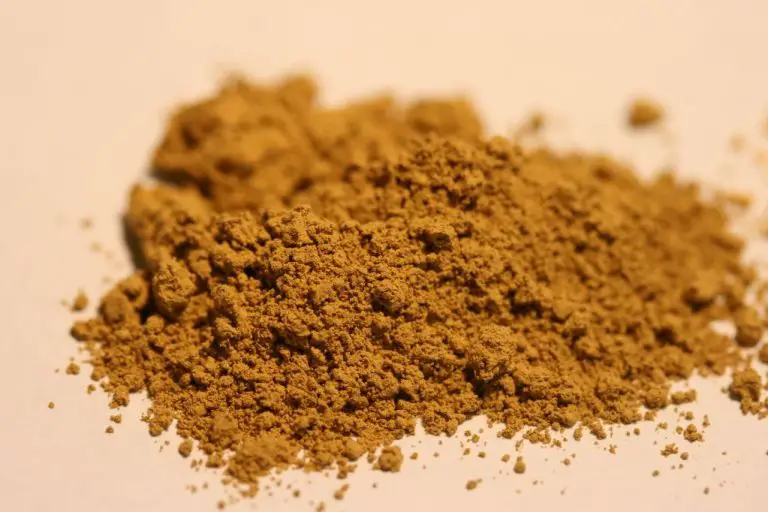What Does Clay Mean Biblically?
Clay is a material that appears frequently throughout the Bible as a symbol of God’s creative power and humanity’s imperfection. The Bible depicts God as a potter who shapes clay into vessels for different purposes (Isaiah 64:8). This metaphor highlights several spiritual meanings related to clay.
Clay’s malleability represents how human beings are formed by God’s hands and yielded to His purposes. Yet as earthen vessels, people remain frail, temporary, and prone to sin. Clay’s origins from the earth symbolize the lowly material humanity is made of. However, God as the Divine Potter can redeem and remake broken clay into something beautiful and useful.
Throughout Scripture, clay seals, tablets, and bricks were used to record messages, decrees, and covenants. Clay’s imprintability reflects how God imprints His will onto humankind. The Bible also uses clay to depict ephemerality versus God’s eternality. While nations and rulers will fade away like clay, God’s truth endures. Understanding clay’s symbolism provides insight into biblical themes of creation, sin, sovereignty, redemption, and eternity.
Clay as Humanity
In the biblical creation story in Genesis, God forms the first man, Adam, out of clay or dust from the ground. Genesis 2:7 states, “And the Lord God formed man of the dust of the ground, and breathed into his nostrils the breath of life; and man became a living soul.” [1] The Hebrew word for “man” used here is adam, which also means “earth” or “ground.” This indicates that Adam was created from the earth itself.
The creation of Adam from clay symbolizes the connection between humanity and the earth. It shows that human beings are part of the natural world, formed from the same material. Yet God breathed divine life into Adam, elevating him with a soul. The image of God forming Adam from clay illustrates the close relationship between God and humanity. It establishes human dignity, as we are molded by the hands of our Creator. At the same time, it points to human frailty and origins from dust.
Clay as Frailty
In the Bible, clay is often used as a metaphor for the frailty and impermanence of human existence. As earthen vessels made from the dust of the ground, human bodies are fragile and temporary compared to the eternal nature of God (Genesis 2:7, 3:19). The apostle Paul expands on this metaphor in 2 Corinthians 4:7 when he writes, “But we have this treasure in jars of clay to show that this all-surpassing power is from God and not from us.” Paul compares humans to common clay jars that hold great treasure inside them. Though the clay jar is weak and easily broken, the treasure within has eternal value.
This metaphor emphasizes that human bodies are weak, imperfect, and destined to return to dust. As earthen vessels, people are prone to suffering, pain, and death. But by God’s grace and power at work within them, frail and flawed humans can contain the glorious light of the gospel and God’s renewing Spirit (2 Corinthians 4:7-12). The weakness of the clay highlights the surpassing greatness of the divine treasure.
Clay and God’s Sovereignty
The metaphor of God as the potter and humanity as the clay is a powerful image used throughout the Bible. As Isaiah 64:8 states, “Yet, O Lord, you are our Father; we are the clay, and you are our potter; all of us are the work of your hands.” (Isaiah 64:8) This illustrates God’s sovereignty and control over His creation. Just as a potter shapes clay into a vessel, God fashions and molds humanity according to His purposes and plans.
The sovereignty of God over humanity is also emphasized in Romans 9. The passage compares humanity to a lump of common clay that the divine Potter can shape however He desires. As it states in Romans 9:21, “Has the potter no right over the clay, to make out of the same lump one vessel for honorable use and another for dishonorable use?” (Romans 9:21) This affirms God’s authority and control to shape humanity, whether for mercy or judgment, according to His perfect will.
The metaphor is a call to humility and submission before the sovereignty of God. Just as clay is helpless in the potter’s hands, we are to yield ourselves fully to the will and purposes of our divine Creator who fashions us according to His plans.
Healing with Clay
One of the most well-known stories of Jesus using clay to heal is when he heals a blind man in John 9. Jesus sees a man blind from birth and spits on the ground to make mud with the saliva. Then Jesus spreads the mud on the man’s eyes and tells him to go wash in the Pool of Siloam. When the man washes off the mud, he is able to see for the first time (John 9:6-7).

Jesus’ unusual use of muddy clay to heal blindness carries deeper meaning. As one source explains, “Jesus’ use of muddy clay carries several deeper meanings. First, Jesus is shown healing blindness in several New Testament passages. However, His methods vary…” By using mud made from the earth, Jesus may have been showing his power of creation and ability to heal what was broken in the natural world.
Making mud by spitting also showed Jesus’ authority over religious rules against kneading on the Sabbath. As another source elaborates, “Namely, he used mud because he knew it was Saturday, the Sabbath, and it’s against the law to knead dough or clay or mud. One of the 39…” By boldly breaking Sabbath rules, Jesus asserted his divine authority.
Ultimately, Jesus’ healing of the blind man with clay and spit reveals his compassion, power over disability, authority over religious rules, and ability to use humble means for miraculous purposes.
Destruction into Clay
The Bible contains several references to God destroying pagan idols, false gods, and even entire nations by turning them into clay or dust. For example, in the book of Daniel, King Nebuchadnezzar has a dream about a giant statue made of gold, silver, bronze, iron, and clay. The prophet Daniel interprets this as foretelling the rise and fall of world empires that oppose God (Daniel 2:31-45).
Later, Daniel interprets handwriting on the wall that foretells the end of King Belshazzar’s kingdom: “God has numbered the days of your reign and brought it to an end. You have been weighed on the scales and found wanting. Your kingdom is divided and given to the Medes and Persians” (Daniel 5:26-28). That very night, Belshazzar is slain and his kingdom destroyed.
The prophet Isaiah also prophesies the destruction of idols: “All the idols will perish…Their images will be put to shame” (Isaiah 42:17). Isaiah says the workman who shapes idols will become just like them, “he is feeding on ashes, a deluded heart misleads him” (Isaiah 44:20). God promises to make these false idols “as before they were made” (Jeremiah 43:13), reduced back to clay.
So in Scripture, the crumbling or destruction of idols, nations, and people into clay or dust symbolizes God’s judgment on the wicked and His sovereignty over earthly powers.
Clay and Resurrection
In the Bible, clay is often used as a metaphor for humanity and the fragility of human life. However, clay also symbolizes the ability to be reshaped, remade, and given new life. This is prominently seen in the theme of resurrection.
In Jeremiah 18:1-6, the prophet visits a potter’s house and watches the potter reshape a lump of clay that was marred. This passage conveys God’s sovereignty and ability to reshape Israel just as a potter can reshape clay. It alludes to the capacity to start over and be reborn.
Similarly, the resurrection of Jesus Christ is a profound demonstration of God’s power to bring new life from death. Jesus was crucified and buried, only to be resurrected on the third day. As 2 Corinthians 4:7 (ESV) states, “But we have this treasure in jars of clay, to show that the surpassing power belongs to God and not to us.” The power of Jesus that resurrected him from the grave is the treasure that we as fragile jars of clay contain.
Just as a potter can recycle and remake marred clay, God can resurrect and remake humanity through Jesus Christ. The story of the potter and the clay in Jeremiah points forward to redemption through Christ’s triumph over death. As earthen vessels, we share in resurrection hope. (As cited in [Source])
Clay Tablets and Scripture
According to the Bible, the Ten Commandments were originally written by God on two stone tablets and given to Moses on Mount Sinai (Exodus 31:18). However, after Moses returned from the mountain and saw the Israelites worshipping the golden calf, he smashed the tablets in anger (Exodus 32:19). God then commanded Moses to carve out two new stone tablets so He could rewrite the Ten Commandments (Exodus 34:1).
The Bible frequently mentions God’s laws and commandments being written on tablets of stone. The Ten Commandments on the stone tablets represent God’s covenant with His people (Deuteronomy 4:13). However, before stone tablets, laws and stories were often recorded by inscribing words into soft clay which was then dried or baked into a permanent tablet. Clay tablets were a common form of writing in Mesopotamia going back to around 3000 B.C.
According to the book of Job, God Himself inscribed Job’s story on a clay tablet: “Oh, that my words were recorded, that they were written on a scroll, that they were inscribed with an iron tool on lead, or engraved in rock forever!” (Job 19:23-24). This illustrates how God views Job’s sufferings and perseverance as worthy of permanent record.
The ancient Sumerians and Babylonians wrote on clay tablets using a reed stylus. The Bible refers to this writing method in reference to the “writing on the wall” interpreted by Daniel (Daniel 5:5). Clay was an abundant resource in the Near East so it was a convenient and cheap writing medium. Important documents like legal contracts, histories, and literature were inscribed on clay tablets which were then baked to preserve them.
Clay Seals and Authority
In ancient times, clay seals were used by kings and officials as a symbol of authority and to authorize documents. Pieces of clay would be impressed with an official seal and then attached to scrolls or doors to prove authenticity and prevent tampering. The seal stamp imprinted in the clay served as the “signature” of the king or official.
Archaeologists have discovered many ancient clay seals, some inscribed with names found in the Bible. For example, a trove of First Temple-period seals were found near Jerusalem’s Temple Mount in 2021, and some were inscribed with names like “Nathan-Melech the king’s servant” which is also mentioned in the Book of 2 Kings (1).
The Bible often uses the metaphor of sealing with clay to represent authority. For example, Job 38:14 states “The earth takes shape like clay under a seal; its features stand out like those of a garment.” This verse conveys how God as Creator has ultimate authority over shaping the earth (2). Just as a king’s seal imprints clay with his authority, God imprints His sovereign authority onto the material of creation.
(1) https://www.patternsofevidence.com/2022/03/04/clay-seals-with-biblical-names-found/
(2) https://biblehub.com/job/38-14.htm
Conclusion
Throughout the Bible, clay takes on a variety of symbolic meanings. It represents the frailty and impermanence of human life, as we are formed from dust and return to dust when we die. Yet clay also signifies God’s sovereignty and creative power – He fashions us from clay and breathes life into our nostrils.
Clay’s natural properties lend themselves to additional symbolism. Clay’s malleability represents how God shapes and molds our lives. The healing properties of medicinal clay point to God’s healing and restoration. The tablets of stone and clay seals imprinted with authority reflect God’s covenants and divine authorship.
Most significantly, clay embodies the cyclical process of destruction and rebirth. Just as vessels formed from clay can be shattered and then remade, God promises spiritual rebirth and resurrection from the dust. As we journey through life, clay remains a powerful biblical symbol of humanity’s origins and relationship to the Divine Potter.




